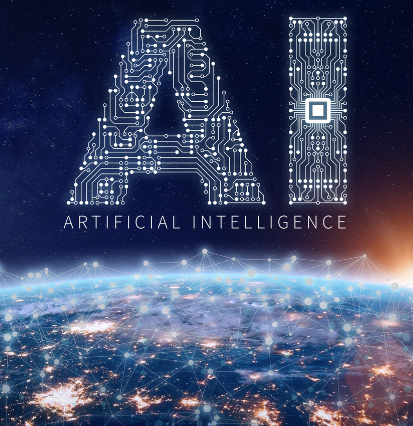What is Artificial Intelligence?
AI is a technology package that works in conjunction, making it possible for robots to understand, interpret, act and learn like human beings. Perhaps this is why everyone has a distinct concept of artificial intelligence: AI isn’t simply one thing.
Machine learning and natural language processing are examples of AI technologies. Each is on its own development path, and when paired with data, analytics, and automation, they may help organizations achieve their goals, whether it’s improving customer service or optimizing the supply chain.
AI comes in a number of different forms. Here are a few examples:
- Chatbots employ artificial intelligence (AI) to better comprehend client concerns and give more efficient responses.
- To improve scheduling, intelligent assistants employ AI to interpret crucial information from massive free-text datasets.
- Recommendation engines can make automated TV show recommendations based on a user’s viewing behavior.
AI is more about the process and the ability to think faster and analyze data than it is about any certain structure or function. Although pictures of high-functioning, human-like robots taking over the globe conjure up images of AI taking over the world, AI isn’t meant to replace people. Its objective is to greatly enhance human abilities and contributions. As a result, it is a highly valued commercial asset.

History of Artificial Intelligence
Increased data quantities, better algorithms, and developments in computer power and storage have led to the development of AI in 1956, but today it has become increasingly prevalent.
Early AI research in the 1950s concentrated on problem-solving and symbolic techniques. In the 1960s the US Defense Department grew interested in this type of work. Computers were taught to imitate basic human reasoning. In the 1970s, for example, the Defense Advanced Research Programs Agency (DARPA) sponsored street mapping projects. In 2003, before Siri, Alexa, or Cortana came into being, DARPA developed intelligent personal assistants.
This pioneering work opened the path for today’s computers to automate and formalize thinking, such as decision support systems and smart search engines, which can be built to complement and augment human talents.
Importance Of Artificial Intelligence
AI is significant because it may reveal previously unavailable insights into firms’ operations and because, in some cases, AI may perform tasks better than humans. AI systems often complete operations fast and with few errors, especially when it comes to repeated, detail-oriented tasks like analyzing massive amounts of legal documents to ensure essential fields are appropriately filled in.
This helped to increase productivity and gave completely new business opportunities for some larger companies. Prior to the current wave of AI, it would have been unthinkable to imagine using computer software to connect riders to cabs, but Uber has grown to become one of the world’s greatest firms by doing just that. It uses strong machine learning algorithms to predict when individuals will need to travel to specific locations, allowing drivers to plan ahead of time. Another example is Google, which has become a key player in a wide range of online services by leveraging machine learning to better understand how people use their services and then enhance them. Sundar Pichai, Google’s CEO, announced in 2017 that the company would be the first “AI” organization.
AI has been employed by today’s largest and most successful businesses to better their operations and gain an advantage over their competitors.
What are the benefits and drills of AI? What are they??
The potential of AI to analyze huge volumes of data substantially faster and to make more exact predictions than humans is quickly developing artificial neural networks and deep-learning artificial intelligence.
While the enormous volume of data collected daily buries a human researcher, machine learning systems can turn that data quickly into useful information. The biggest downside of using AI at the time of writing is the high expense of processing the massive amounts of data required for AI development.

Advantages
- Detail-oriented occupations require less time.
- Data-intensive tasks take less time.
- Consistent results are delivered.
- AI-powered virtual agents are constantly available.
Disadvantages
- Expensive
- Necessitates extensive technological knowledge.
- A lack of skilled staff to build an AI tool.
- It only knows what has been shown.
- It lacks the ability to generalize from one task to the next.
How AI Works
By combining vast amounts of data with fast, repeated processing and sophisticated algorithms, AI enables software to learn automatically from patterns or features in the data. AI is a vast field of study that encompasses numerous theories, techniques, and technologies, as well as the following main subfields:
- Machine learning automates the creation of analytical models. It discovers hidden insights in data using methodologies from neural networks, statistics, operations research, and physics without being explicitly taught to hunt for or draw conclusions.
- A neural network is a sort of machine learning that is made up of interconnected units (similar to neurons) that process data by responding to external inputs and transmitting information between them. The strategy takes multiple runs at the data to identify relationships and draw meaning from undefined facts.
- Deep learning makes use of massive neural networks with several layers of processing units to learn complicated patterns in enormous volumes of data, making use of increases in computing power and improved training procedures. Image recognition and speech recognition are two popular applications.
- Computer vision employs pattern recognition and deep learning to understand what is in a photo or video. If robots can interpret, analyze and understand images, photos and films can be captured and interpreted in real-time.
- Computers are known as natural linguistic processing for the analysis, understanding, and synthesis of human language, including speech (NLP). The next stage of NLP is natural language interaction, which allows humans to connect with computers using everyday language to complete tasks.
Additionally, AI is enabled and supported by a number of technologies:
- The substantial computational capacity required for iterative processing is provided by graphical processing units, which are crucial in AI. In order to train neural networks, you’ll need a lot of data and a lot of computing power.
- From linked devices, the Internet of Things creates huge volumes of data, the majority of which goes unanalyzed. We can utilize AI to automate models, which will allow us to use it more.
- To evaluate more data faster and at numerous levels, advanced algorithms are being developed and coupled in innovative ways. Identifying and anticipating unusual events, understanding complicated systems, and optimizing unique settings all require sophisticated processing.
- APIs, or application programming interfaces, are portable code packages that enable AI capabilities to be added to current goods and services. They may integrate picture recognition and Q&A capabilities into home security systems to describe data, make captions and headlines, and highlight noteworthy trends and insights.
In short, AI’s purpose is to create software that can reason and explain based on information. AI will enable human-like interactions with software and decision help for specialized jobs, but it is not – and will not be anytime soon – a replacement for humans.

